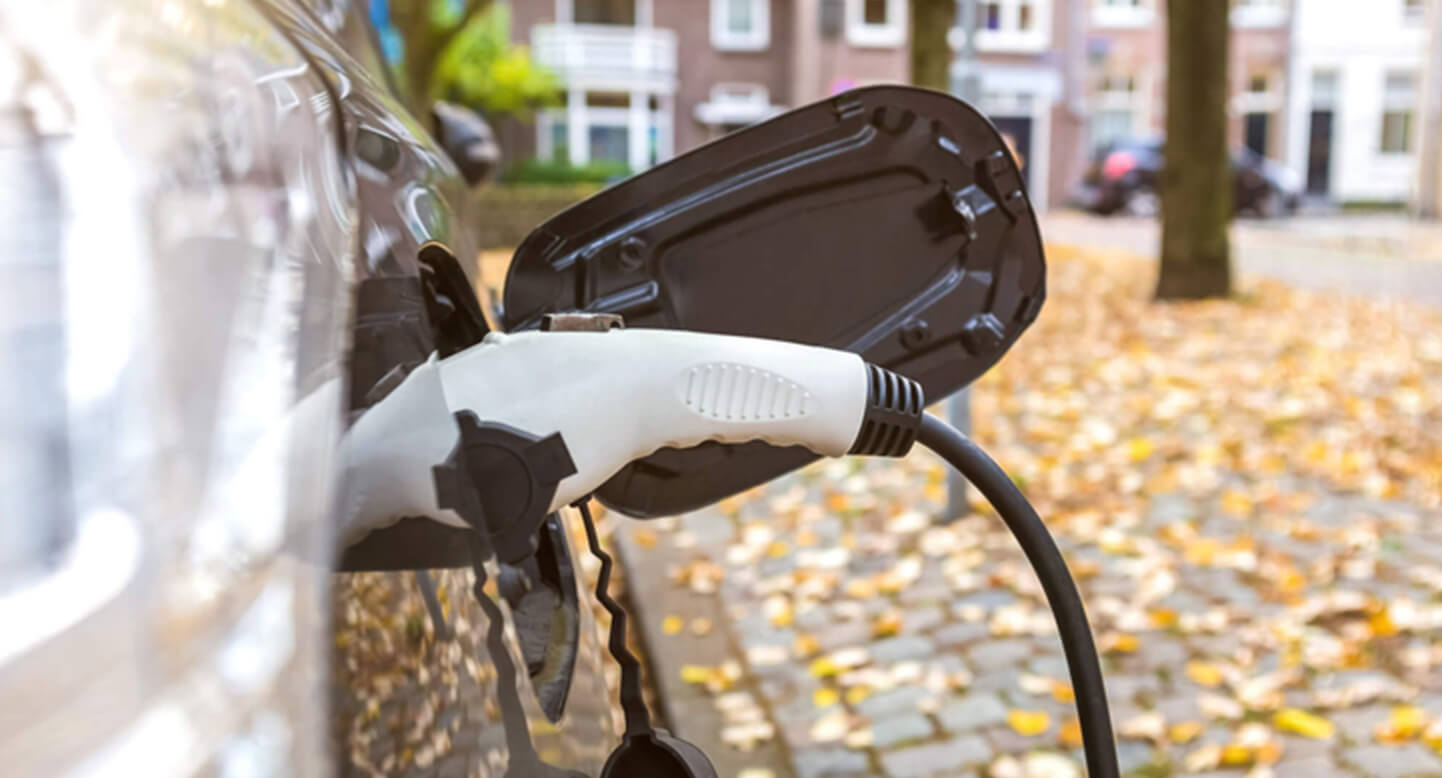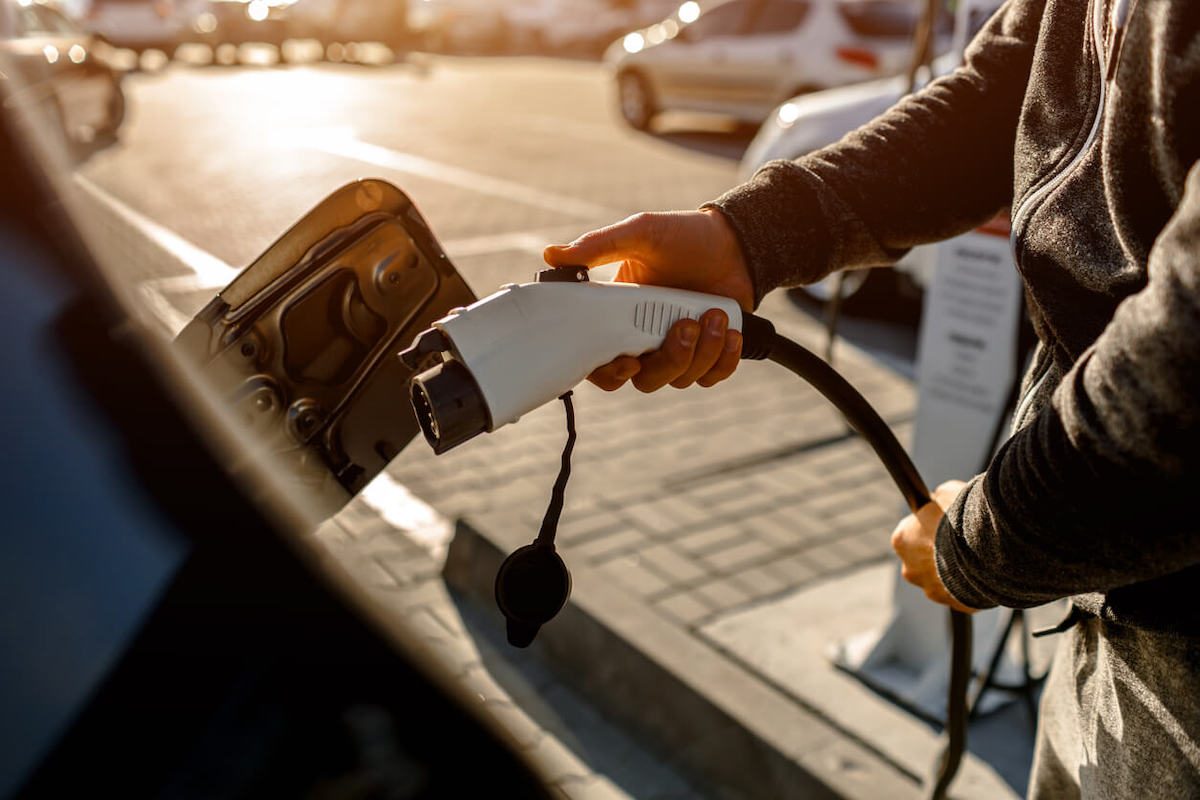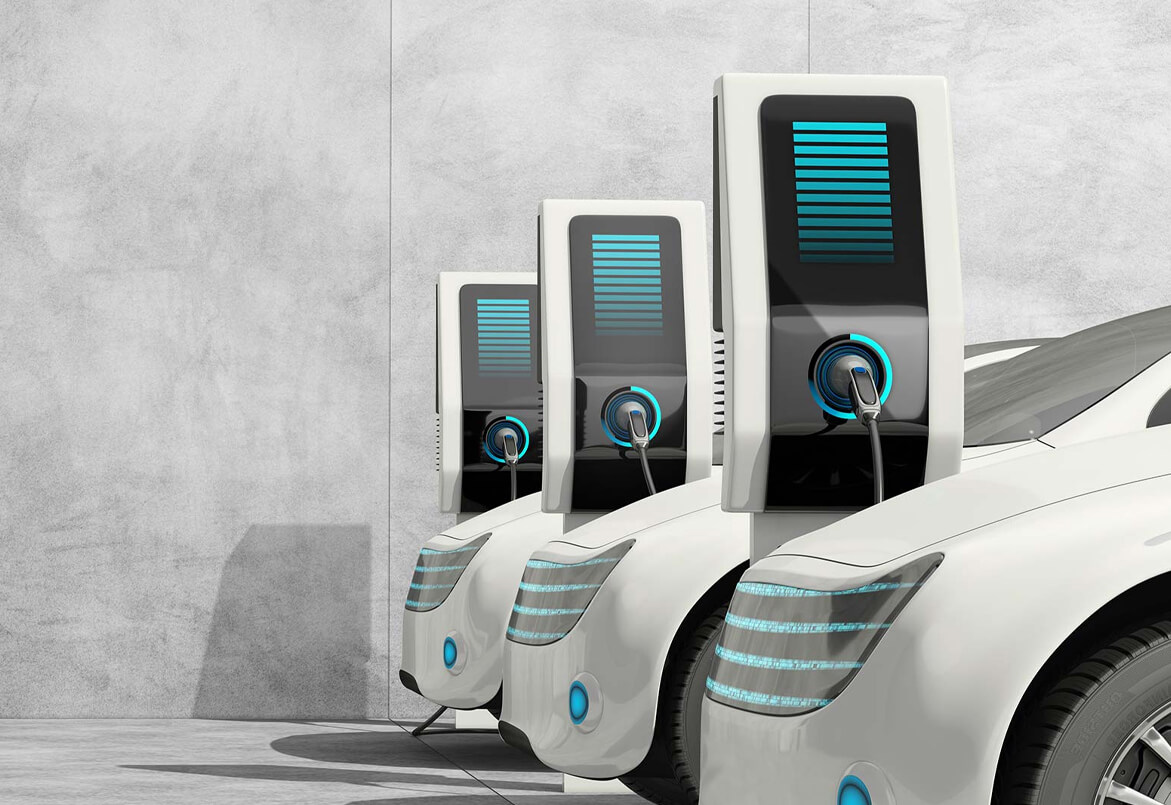Service
Electric Vehicle Infrastructure Financing
How to fund the necessary equipment, machinery, and support required of electric vehicles.

Levels of Charging Infrastructure
It’s important to understand that there are three levels of EV charging. While Merchants Fleet recommends Level 2 stations for home and work, we’re here to guide you through all your options.
Level 1
Level 1 chargers are basic, plug right into a standard outlet provided you have the right voltage, and take 24+ hours to fully charge an EV. They’re cost-free to set up but charge too slowly to be practical for fleet use.
Level 2
Level 2 chargers are the go-to option for workplaces and public charging, capable of charging multiple vehicles daily. They can fully charge an EV in 10–12 hours (or less with a partial charge) and are great for overnight home charging. Many public stations use Level 2, often with multiple connectors for simultaneous charging.
Level 3 (DC Fast Charging)
Level 3 (DC fast chargers) are found at some public depots and can charge an EV to 80% in just 20 minutes. While convenient for reducing charging congestion or quick fleet top-ups, they’re pricier and may degrade the battery faster with frequent use.
Charging Station Options
There are three main types of charging options, with depot and home charging being the most popular options for EV fleets. Public charging stations are available across the U.S., which can be helpful in the event your vehicle needs a quick charge between trips.
Depot
This refers to an overnight hub where fleet vehicles can recharge.
Home
Drivers may have their own charging stations so that they can charge their vehicles directly from their own home.
Public
Level 1–3 charging stations are available across the U.S. Drivers can search for both public and private charging stations on the U.S. Department of Energy’s Alternative Fueling Station Locator map.
Discover 10 Tips to Reduce EV Infrastructure Costs
Setting up EV charging infrastructure takes some upfront investment, but there are plenty of ways to save along the way. This guide shows you how to cut costs and get started with confidence.

Federal Funding Resources
EV funding resources are always evolving, and each state has its own programs and guidelines. Start by checking with your state’s transportation department or connect with our fleet electrification specialists, who can point you to resources tailored to your location.
For federal funding opportunities, here are some key resources:
EV Federal Funding and Financing Programs
The U.S. Department of Transportation offers details on grant funding programs (discretionary and formula), loan options, tax incentives, and more. It also includes information on the Bipartisan Infrastructure Law, signed on Nov. 15, 2021, which expands funding for EV charging stations.
Electrification Coalition
This non-profit works to promote widespread EV adoption through advocacy, education, supply chain development, and more. They provide webinars, case studies, policy reports, and the latest news on electric vehicles.
State Plans for Electric Vehicle Charging
This resource includes a table with state-specific funding details, information on EV charging coordinators, and links to NEVI (National Electric Vehicle Infrastructure) planning for each state.

Frequently Asked Questions
Are there any incentives for installing EV charging stations?
Yes, just as there are incentives and tax credits for EVs, they are also available to help cover the cost of charging equipment and installation. Under the Qualified Plug-In Electric Vehicle (PEV) Tax Credit, certain new electric vehicles are eligible for a federal income tax credit of up to $7,500 for individuals.
How do I know if transitioning from ICE vehicles to EVs is the right decision for my fleet?
We understand that there’s a lot to consider, which is why we recommend exploring our fleet electrification resources. Just remember that it’s important to educate yourself and gather as much information as possible to learn more about the EV landscape, including makes, models, and related technologies. Here are a few guides to help you get started: Your Guide to ICE vs. EV Maintenance Costs and 8 Steps to Effectively Plan for EV Charging. Remember, Merchants Fleet EV consultants and experts are also available to help answer your questions and help you navigate the ICE vs. EV process.
Our company is unsure of when to replace our fleet vehicles. Can Merchants Fleet help?
Determining the optimum time to replace your fleet vehicles can help you avoid costly maintenance, keep your drivers happy, and preserve remarketing value. When to replace your vehicles depends on a variety of factors, such as maintenance, mileage, utilization, and more. Merchants Fleet strategic consulting can examine your company’s unique data to identify opportunities and make a recommendation. Learn more about fleet consulting.
How do I budget for EVs?
You should consider all of the following costs associated with EVs: financing, charging equipment, installation, operation and maintenance fees, as well as any extended warranty and annual charging network fees. Our team will ensure that there are no surprises, and that you’re taking advantage of tax incentives to reduce your bottom line.
Smart People. Smart Data. Fleet Management Success.
Our fleet consultants have it all — the experience, the skills, and the industry know-how. Add in the data and technology at our fingertips, and you’ve got a team that’s ready and eager to work with clients like you.
Experience what expert knowledge can do for
your fleet.
Speak with a Merchants Fleet expert about our total fleet solutions for your organization or industry.


